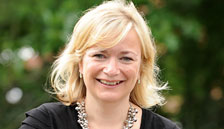Barclays has always been a step ahead of the market.
Three years before the banking crisis hit, it was investigating ways to run its fleet operations more efficiently and effectively, which resulted in a change in funding method and closer partnerships with suppliers.
As the global recession hit in 2008, it was already implementing an efficiency and cost cutting drive.
A fleet workshop initiative held with staff and suppliers would result in 74 cost-saving suggestions, of which six key themes would be implemented. The timing was perfect.
In 2005 Barclays began to assess the way its fleet was funded, then via an employee car ownership scheme.
It decided to switch to a new funding method: contract purchase.
The use of its own funding enabled Barclays to negotiate a higher discount on the effective lease rate with maintenance because it pays for the complete package upfront.
Contracts are written on a wholelife cost basis and can be rewritten and re-calculated mid-term if necessary.
Barclays deducts tax through payroll which makes it timely and accurate for the member of staff and there is no requirement for a P11D.
In addition, the Class 1A National Insurance for the wholelife cost model is deducted to the relevant cost centres through the payroll.
The wholelife cost model doesn’t include fuel because Barclays’ staff cover a wide spread of business miles.
Instead, the company has introduced a levy into the calculation which is linked to a car’s fuel consumption.
Staff are either credited or debited depending on how their chosen car’s fuel efficiency compares against a benchmark, which greatly influences their vehicle choice. Efficient cars are cheaper.
Caroline Sandall joined Barclays in 2005, just as the new funding structure was being rolled out.
It was a new position: Barclays realised that, despite outsourcing its fleet activity, it still needed a fleet manager to co-ordinate activity in terms of supplier relationships, taxation and policy.
Day-to-day fleet activity continues to be outsourced to GE, allowing Sandall time to plan and develop fleet strategy and work closely with the businesses to ensure an effective scheme to meet all needs.
In late 2008, that strategy was all about reducing costs and streamlining the fleet operation.
Sandall arranged a number of workshops, with both staff and suppliers, with the sole objective of coming up with as many ways as possible to reduce costs.
The ensuing 74 suggestions included terminating the entire fleet and moving to cash, buying the same model and specification to negotiate higher discounts and extending contract terms for the existing fleet.
Forty key ideas were taken forward for assessment. Key criteria were: complexity, potential cost savings and level of impact on customers and staff.
The assessment involved senior HR and sourcing leaders within Barclays and liaison with experts on tax and VAT.
The team worked together to provide solutions through process design, writing of the recommendation papers and agreeing the best initiatives to focus on.
Six key themes were implemented, including a re-write of contracts from three-year/60,000 miles to three-year/50,000 miles after analysing actual mileage, a 15% reduction in monthly lease allowances and a review of needs drivers.
A suggestion to lengthen contracts to four years was rejected due to the impact on perk driver satisfaction.
Car allowances had already been reduced and Barclays didn’t want drivers to take a further hit.
As Sandall says: “It’s a delicate balance between saving money and employee dissatisfaction and we need to still offer competitive benefits to attract and keep the best people.”
However, some staff have extended their lease period voluntary and on the same terms, usually because they have not made a decision on a new car or they are simply happy with their current one.
They will need to change at four years to protect Barclays against higher maintenance and repair bills.
















Login to comment
Comments
No comments have been made yet.